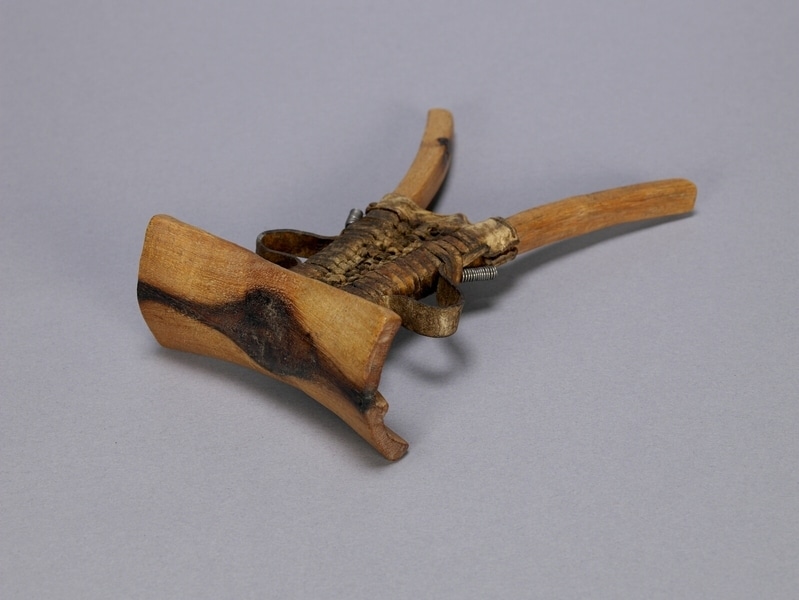Headrest Item Number: 905/2 from the MOA: University of British Columbia


Description
Rectangular-shaped piece of wood that curves down slightly at each end. The base has a thin horizontally placed beam that extends the length of the rectangular-shaped piece of wood. Stemming from it is a small perpendicular piece of wood that splits into two pieces of wood that flare out slightly. The two pieces are bound with skin cording. Skin loops protrude from either side of the piece. Set of two spiral-shaped metal springs are attached to pieces of skin at the top and the bottom on each side.
History Of Use
Headrests, also called neck rests or bolsters. Used when sleeping or resting; meant to support the head at the junction of the neck and head when lying down. Usually a personal object; they are portable and may also be used as a stool. Sometimes used by men to protect elaborate hair arrangements. In some societies, headrests were thought to channel ancestral communications through dreams. The Pokot name would be 'ngecher'; the Turkana name is 'ekicholong'.
Item History
- Made in Kenya
- Owned by Nerina Bene before December 6, 1983
- Received from Nerina Bene (Seller) and Museum of Anthropology Shop Volunteers (Funding source) on December 6, 1983
What
Who
- Culture
- Pokot ? or Turkana ?
- Previous Owner
- Nerina Bene
- Received from
- Nerina Bene (Seller) and Museum of Anthropology Shop Volunteers (Funding source)
Where
- Holding Institution
- MOA: University of British Columbia
- Made in
- Kenya
When
- Ownership Date
- before December 6, 1983
- Acquisition Date
- on December 6, 1983
Other
- Condition
- good
- Accession Number
- 0905/0002